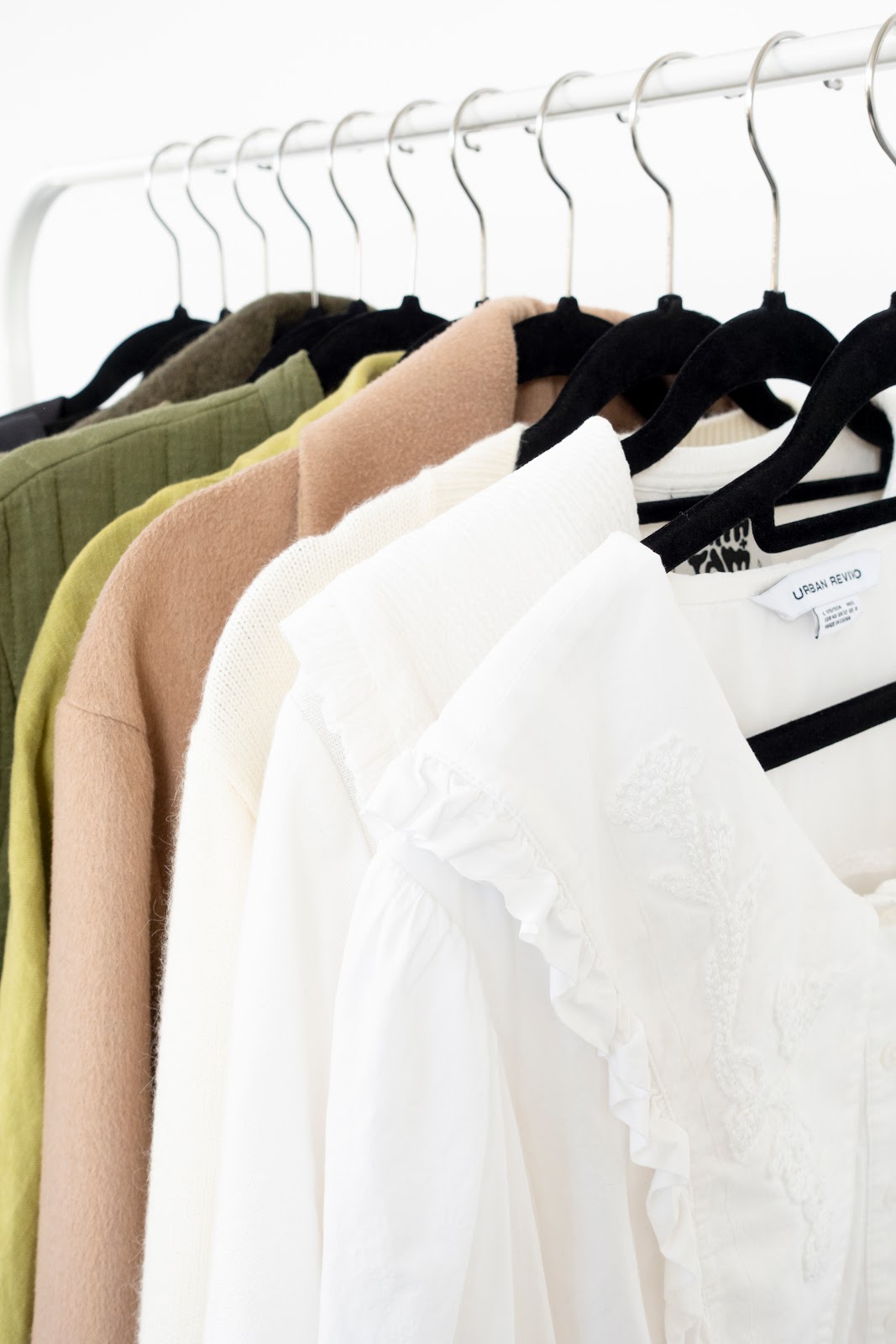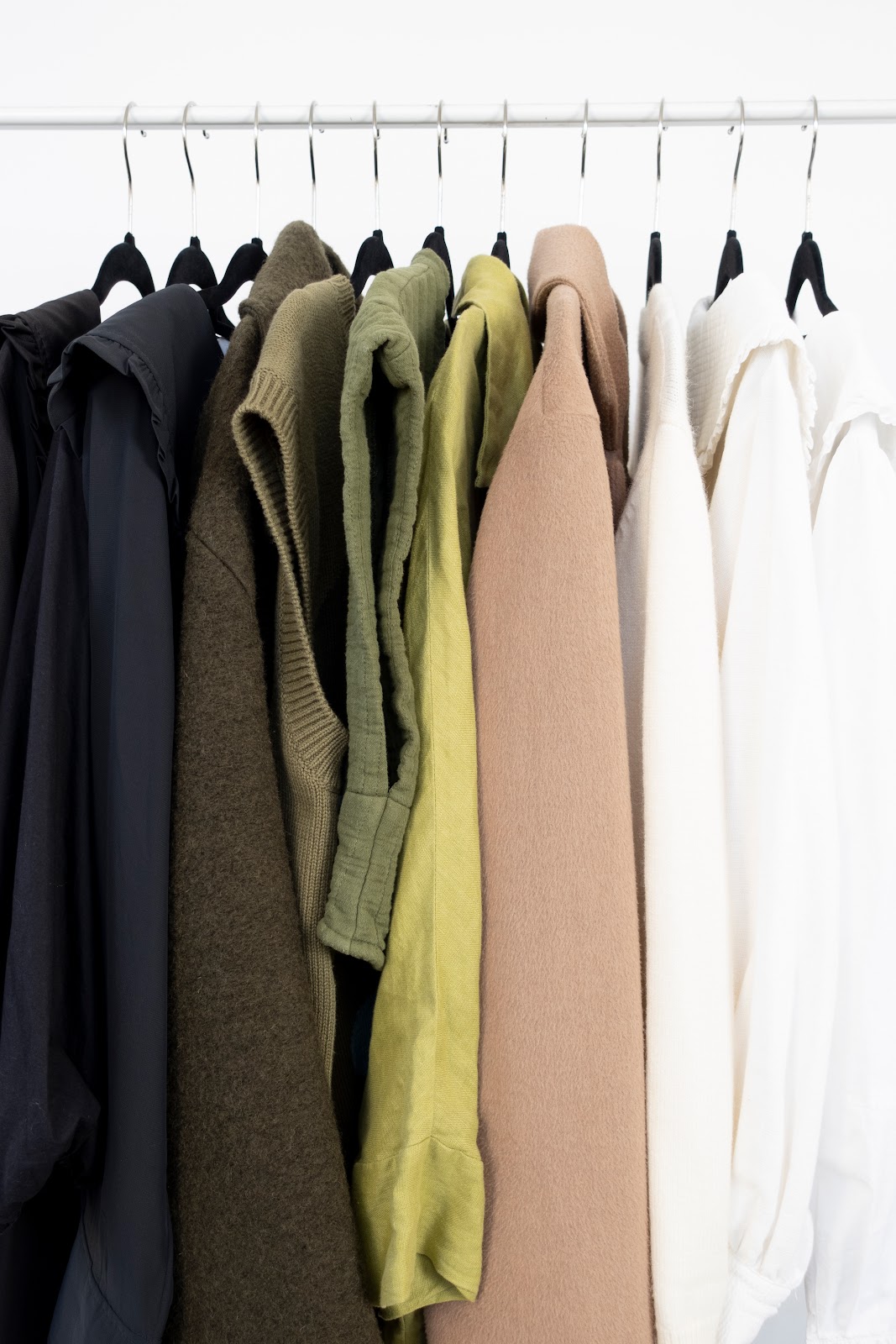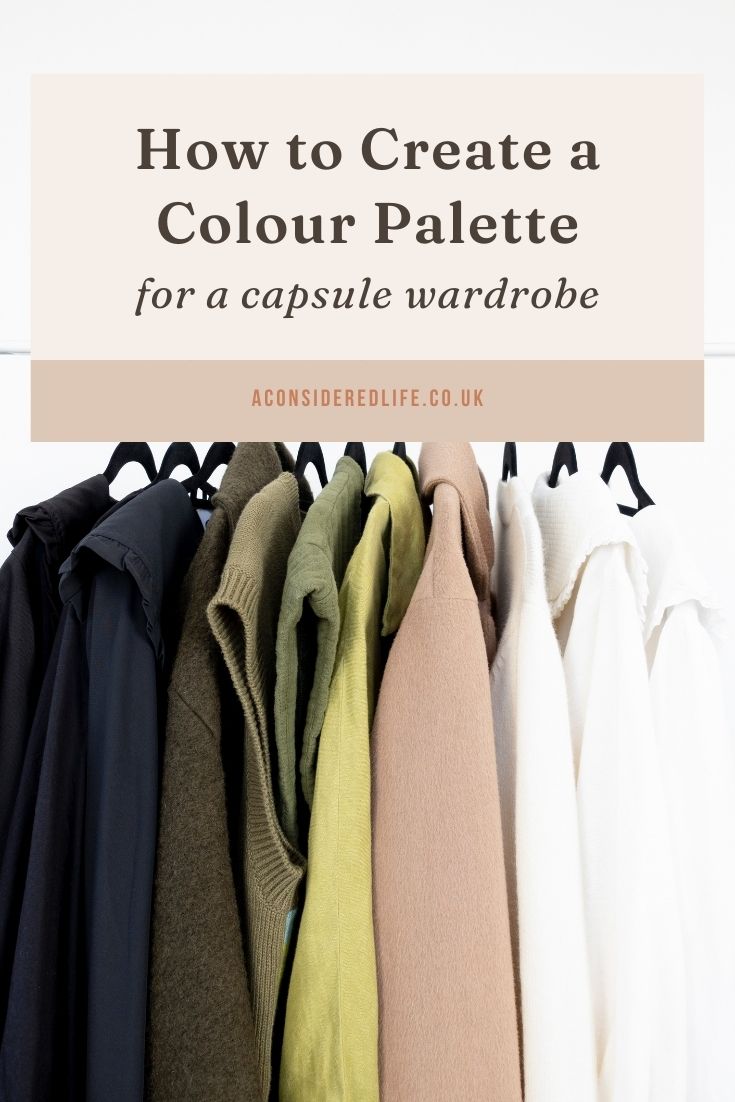
Capsule wardrobes often don't work because only wearing neutral colours gets boring fast especially when you've only got a handful of clothes to wear! If you want to try a capsule wardrobe but prefer dopamine dressing with colourful outfits or find neutrals uninspiring and want a maximalist wardrobe—you still can!
This is how to create a capsule wardrobe colour palette that will show off your personal style and make getting dresser more fun. Even if you prefer neutrals, this guide to choosing a wardrobe colour palette will make your wardrobe look and feel more cohesive.
Why is it important to choose a wardrobe colour palette?
A clearly defined wardrobe colour palette provides the guidelines needed to maintain a cohesive style—without having to give up colour. It simplifies the process of getting dressed by ensuring that every garment can be mixed and matched easily and effortlessly, reducing the stress and time spent on deciding what to wear.
A wardrobe colour palette also supports a more intentional approach to fashion by encouraging thoughtful purchasing habits that minimises the chances of impulse buying. When your capsule wardrobe has a cohesive colour palette, there will be less clutter in your wardrobe and more outfits that feel distinctly you.

What are the basic colours for a capsule wardrobe?
Neutrals make up the basic colours in a capsule wardrobe with black, white, grey, navy, beige, and white being the most popular neutral colours used in capsule wardrobes. They are versatile and easy to style as they generally work with most skin tones making them a great choice for smaller wardrobes.
How many colours should I have in a capsule wardrobe?
It's best to start with 3-5 colours and then slowly add accent colours when you get comfortably styling them. Choose 2-4 neutral colours, such as black, white, grey, beige, or navy, then add accent colours. These can be complementary neutrals or bold accent colours. Starting with a small colour palette will maintain a versatile wardrobe with easy to style outfits.

How do I find a colour palette for my capsule wardrobe?
If you want your outfits to look and feel effortlessly cohesive, deciding on a colour palette for your capsule wardrobe should be a top priority. It not only makes shopping for clothes easier but helps maintain a cohesive capsule wardrobe. But there's a lot more to picking a colour palette than simply choosing your favourite shades.
A well-defined colour palette is one of the most distinctive features of a capsule wardrobe. In order for it to be practical and wearable, a colour palette needs to suit both your life and style to be successful. Otherwise you'll end up with a whole bunch of clothes you're reluctant to wear!
This is an uncomplicated guide to finding a colour palette for your capsule wardrobe. I've used my own capsule wardrobe colour palette to demonstrate the difference between base colours, accent colours, and optional seasonal colours or statement prints.
Create a Style Moodboard
Picking colours you like is easy, knowing how to style them is the hard part. Finding a colour palette that is wearable can take some work but two tools make the process a whole lot easier. By putting together a style moodboard with outfits that can be recreated using the clothes you already own, you'll gain a better understanding of what colours appeal to you and how to style them.
A style inspiration moodboard will help identify your favourite style aesthetics with recurring themes and preferred colours. While putting together a wardrobe inventory will serve as a reference guide, ensuring every piece within your capsule wardrobe aligns with your preferred style. Using them together makes it easier to figure out a colour palette that will work for you.
Consider Personal Style
When creating a colour palette for a capsule wardrobe, think about whether you prefer to wear neutral shades or bold colours. Do you like minimalist fashion or do you prefer dopamine dressing? Consider what colours make you feel confident and comfortable in an outfit, and any shades you hate wearing and want to avoid.
It doesn't matter how well a selection of colours work together if you don't like the way an outfit looks! A colour palette needs to reflect your personal style preferences, which in turn will make your wardrobe much more enjoyable to wear. This will minimise wardrobe decision fatigue by making it easier to mix and match items to create outfits.
Set Style Rules
One of the biggest reasons people struggle with personal style is not having any style rules that help guide purchasing decisions and style choices. When you have personal style goals, it becomes easier to align your wardrobe with your preferred aesthetic helping to avoid impulse purchases and a colour palette that doesn't work!
For instance, if you prefer simple outfits you may opt for a neutral colour palette with only 1-2 colours per outfit. If your style embraces dopamine dressing, your wardrobe colour palette might incorporate a wider range of bright colours with several being used in each outfit. This is how to set personal style goals that will help identify a wardrobe colour palette that aligns best with your preferred aesthetic.
Identify Base Neutrals
When it comes to deciding on a capsule wardrobe colour palette, start with foundational colours in neutral tones. These neutrals serve as a cohesive foundation, allowing for easier mixing and matching of clothes that maximises the wearability of individual items. Having a set of base neutrals also ensures your capsule wardrobe remains timeless and adaptable across all seasons and occasions.
The base neutrals for a capsule wardrobe should include between 2-4 colours such as black, white, grey, beige, or navy. Pick these colours based on what best flatters your skin tone and aligns with your personal style. All outfit basics should be purchased in these colours to maintain a balanced and harmonious colour palette throughout your wardrobe.
Choose Accent Colours
Accent colours help break the monotony of neutrals, making it possible to mix and match clothing items while still maintaining a cohesive and harmonious wardrobe. A capsule wardrobe works best with between 1-3 accent colours. This provides a good mix of base neutrals and accent shades that make it easier to maintain a small wardrobe with lots of different outfit colour combinations.
Accent colours are bolder shades, typically used as statement pieces, that act as a contrast against the base neutrals. Including accent colours in a capsule colour palette helps to create a more personalised wardrobe with visually interesting outfits. These colours should be chosen based on personal preference and lifestyle considerations so that the colours are easy to style and wearable for everyday life. Go as bold as you want—or stick to an entirely neutral colour palette!
Play With Colour Harmonies
If you're struggling with choosing a colour palette for your capsule wardrobe, try playing with colour harmonies. Colour harmony refers to aesthetically pleasing colour combinations that are naturally more visually appealing and will help create outfits that feel balanced and cohesive. Experiment with different combinations until you find the ones that best suit your personal style and the outfit inspiration picked for your moodboard.
If you're unfamiliar with the colour wheel, Adobe Color has a great tool for creating harmonious colour palettes using analogous, triadic, complementary, and monochromatic shades. Use your style moodboard to identify colours that appeal to you and apply them to the colour wheel to pick out shades that might work for your wardrobe.
Test the Colour Palette
A successful wardrobe colour palette should be both wearable and versatile. The only way to find out if your selection of shades are a good choice for your lifestyle and outfit preferences is by testing them out in different outfit combinations. This will ensure that your colour palette is not only easy to style and compatible with your limited wardrobe choices but that it aligns with your daily life and personal style.
Testing out a colour palette will make it obvious what colour combinations work together and which ones don't. It's possible to then make adjustments to create a more harmonious selection of shades that helps simplify getting dressed and makes your outfit options more cohesive and satisfying to wear.
Mix In Seasonal Colours and Add Statement Prints
An optional step for those who prefer bolder, more varied outfits is to choose seasonal colours or add statement prints. These pieces can be incorporated into a wardrobe making outfits more visually appealing. Sticking to your chosen shades will make incorporating patterns and prints into your wardrobe a lot easier.
Specific colours can be rotated through depending on the season—think pastel shades for spring and summer, and jewel tones in autumn and winter. While statement prints can be incorporated into outfits throughout the year when you want to wear a more eye-catching look. Textured fabrics are also great for layering, adding an extra dimension to outfits.
Keep Tweaking
Capsule wardrobe should make getting dressed easier and less stressful, which means they need to flex and adjust depending on your life, style, and needs. Don't be afraid to tweak your wardrobe's colour palette as often as you need to in order to find a range of colours that works for you in any situation. As your personal style naturally develops your colour palette will become more clearly defined and change less often.
It's best to keep a wardrobe's colour palette as neutral as possible while testing out accent shades to see what works. Thrifting for clothes is an excellent way to experiment with colour without the risk of wasting money or buying clothes you won't wear. Any items that don't work can be resold while ones that do can be incorporated into your capsule wardrobe permanently!
Pin This Post:

